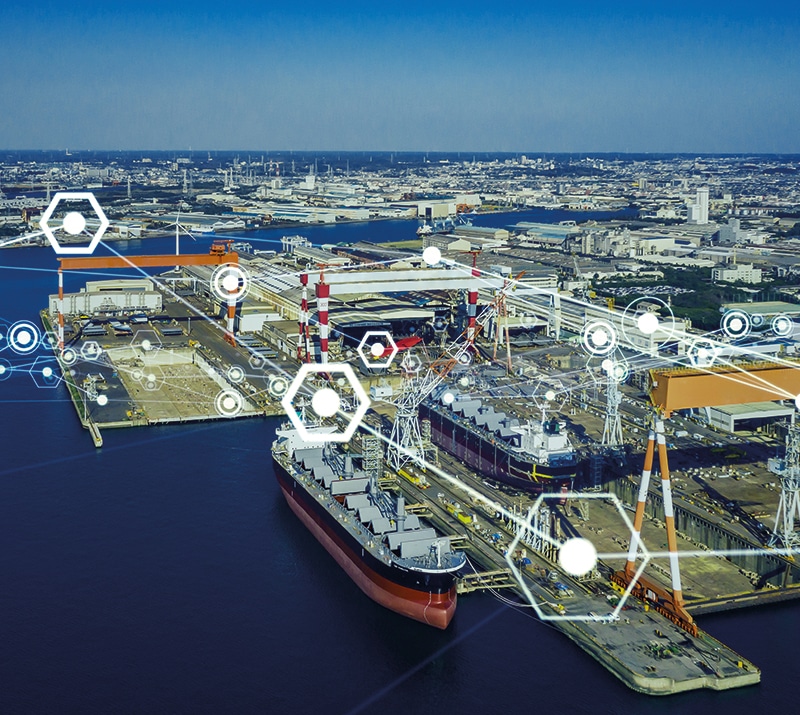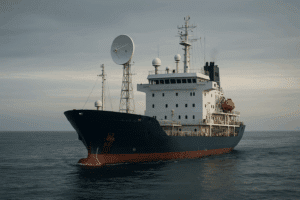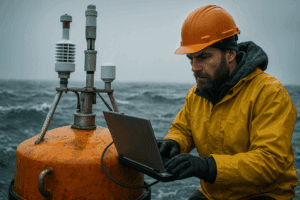The maritime industry is a strategical economic sector since 90% of goods over the world are carried by sea. Considering the growth of global trade and the new issues it raises, the support of digital technologies is essential to better manage sea transportation. Alike all sectors, the transition towards digitalization and automation is on its way in the maritime industry to tackle the challenges and take advantage of the opportunities offered by such initiative as it recovers from the effects of the COVID-19 pandemic.
Why is digitalization crucial for the sea transport industry?
In the current era of the Internet and new technologies, the competitive environment has evolved, as well as the customers’ behaviors and expectations. They require reliable, flexible, transparent and cost-efficient transport services. Besides, the maritime industry faces multiple challenges: reducing its environmental impact, ensure efficient and sustainable operations, increasing both short and long-term competitiveness, comply with stricter regulatory requirements.
Ensuring the safety and efficiency of maritime transport contributes to smooth functioning of the global supply chains. This is more important than ever in these difficult times where the industry has to deliver vital goods while dealing with major issues like huge port congestion, empty containers shortage, and freight rate surges…
Predict the ETA of any vessel for free!
Get an accurate prediction of the ETA of any vessel thanks to our ETA Calculator Module. It’s easy, in real-time and free. You just have to sign-up to our HUB.
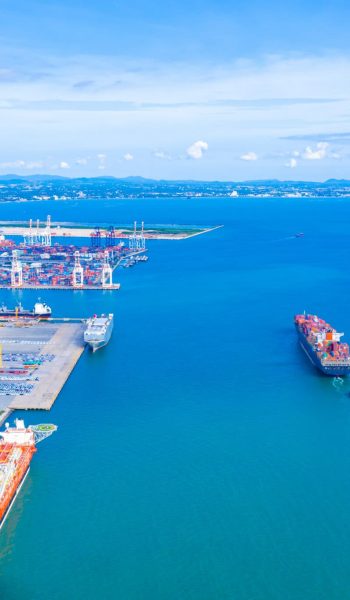
What does the digital revolution bring to the maritime transport sector?
The companies from the sector have to engage into digitalization in order to remain competitive and play their role as a part of an integrated ecosystem. The potential of artificial intelligence, big data, data analytics, IoT and automation, blockchain, robotics, Machine Learning … are combined to: connect and smoothen communication between all stakeholders on the global supply chain: ships’ crew, shipping lines, freight forwarders, port authorities, end-customers.
Here are some benefits of the revolution in shipping industry:
Organizationally
- shift to remote working, monitoring and control
- get and analyze real-time and accurate information for better decision-making
- prevent cybersecurity risks
- reduce errors thanks to dematerialized document management
- automatize information sharing
- optimize shipping capacity and routes to reduce costs and increase profit margins
- enhance security
- better understand the customers’ needs and expectations, to improve their satisfaction and trust
Environmentally
- reduce fuel consumption and greenhouse gases emissions
- protect natural ecosystems (ocean and coastal ecosystem)
Operationally
- streamline existing processes (port, customs…)
- monitor vessel performance in real time
- improve the traceability of goods
- lower transit time
- manage ETA according to availability of the berths in seaports by adjusting navigation speed, shortening the waiting time at the destination port
- cut operational cost (OPEX)
- reduce energy consumption using an energy management system (EnMS)
- create new business opportunities
- prevent accidents by making reliable predictions
- analyze the equipment performances so as to conduct predictive maintenance
Cloud-based software can be used anywhere, anytime, provided that a fast internet connection is available. This allows easy and permanent access to all tools while on the move. In the maritime industry, Sinay is a first-class partner for companies that need digital solutions. Its range of logistic tools covers various needs: optimize the vessels routing and voyage to shorten the sailing time, reduce the carhips’ fuel consumption, predict ETA, collect and process large amounts of data to make fast and relevant decisions, lower the industry’s carbon footprint.
What are the barriers to quicker digital revolution in the maritime transport sector?
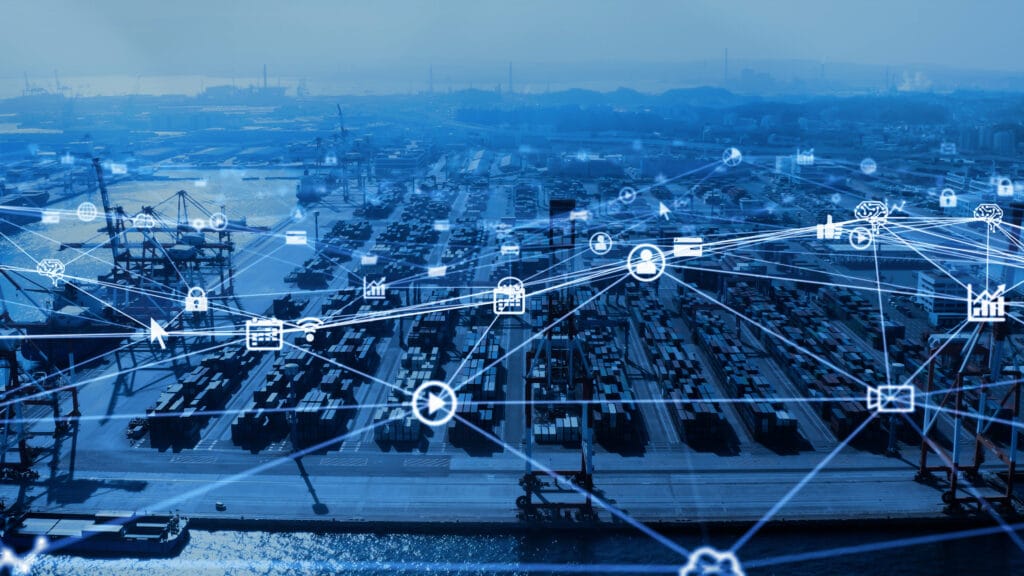
The International Maritime Organization (IMO) is working to make sure that the industry embraces the digital revolution in order to enhance its efficiency and sustainability to facilitate trade and economic growth. Although there has already been some progress, the maritime industry still has various challenges to take up. The barriers identified are either related to organization, to technologies, or to the external environment:
Related to organization
- find qualified labor force to fulfill the requirements resulting from new technologies;
- align the digital strategy and the business strategy in organizations;
- motivate employees and managers and increase their awareness about the benefits of digital transformation. This allows the companies to overcome resistance to change and obtain buy-in of parties, which is a key success factor for the technology implementation project;
- harmonize cultures, information systems, vision and strategy;
Related to external environment
- enact adequate regulation;
- set industry specific guidelines and standards;
- encourage investments and initiatives;
- improve collaboration and coordination to share best practices, pool resources and skills while taking the first steps;
Related to technologies
- reduce implementation costs;
- increase the quality of offshore Internet connections.
Above all, one of the main challenges is that stakeholders across the globe, or even in the same country, are at different stages of their digital transformation process. Some seaports and companies are highly digitalized whereas many others are just starting or are lagging behind. According to a recent study, only a small number of companies in this sector consider that digitalization has brought significant changes to their business.
Conclusion about the digital revolution in the maritime industry
In the coming years, the demand for import and export, driven by e-commerce, will increase. All players in the maritime industry have to get ready to meet constantly changing requirements. Therefore, there’s still a long way to go to catch up with the rest of the world. And there will be no great and unique solution to subscribe to quickly reach the goals set. According to experts, the key is for everybody to act digital in day-to-day tasks. Eventually, the innovations will be leveraged to create value for the shipping operators and lead to a significant increase in the economics of the business.
Frequently Asked Questions About: Digital Revolution
AI has many uses in the maritime industry, such as:
- For surveillance of port and coastal areas.
- To protect fishing areas and adhere to fish quotas.
- To monitor pollution in the environment.
- To follow cargo movements and predict vessel ETAs.
Port digitalization is the foundation of Smart Ports and Digital Twins, both technological tools and solutions that can transform real-time data into accurate and more precise business decisions, rendering port operations extremely effective as it interconnects all sectors of the maritime supply chain.
Having a Digital Twin for a port is like having a visually accurate interactive digital model of the port and its surrounding environment that updates in real-time with all current activities fashioned using data collected by various sensors on site.
